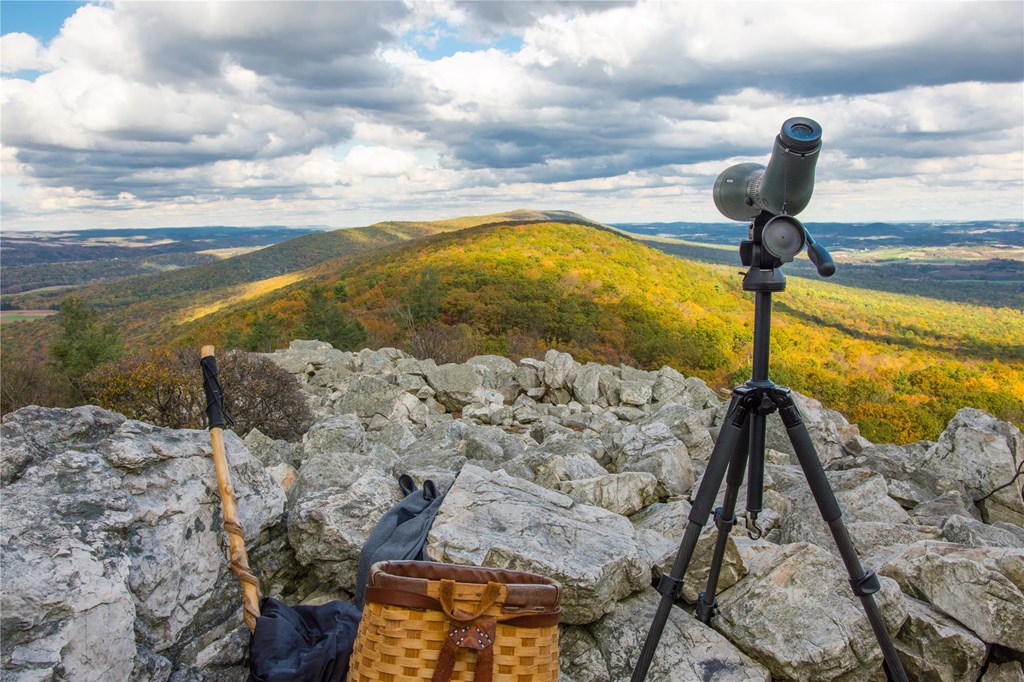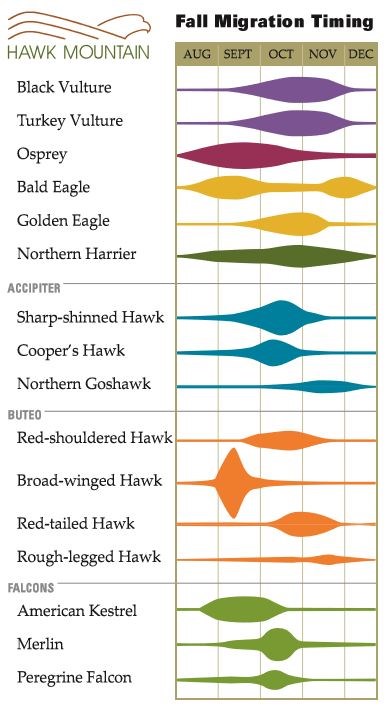Autumn Hawk Migration

Hawk Mountain's Autumn Migration Hawk Count is the longest running raptor migration count in the world. It began in 1934, when founder Rosalie Edge hired a curator named Maurice Broun, and he started meticulously keeping track of the passing migrants.
Today, Sanctuary staff, trainees, and volunteers are stationed at the lookouts to help visitors spot and identify raptors, including hawks, eagles, falcons, and vultures. The count runs from August 15 through December 15. For raptor enthusiasts and those who cannot make it to Hawk Mountain, daily counts are posted throughout the season here.
Annual counts for this 4 month period average 18,000 raptors total with usual one-day peak counts of more than 3000 birds seen during September, due to peak broad-winged hawk migration. Autumn hawk flights are best on days with northwest winds following a cold front.

Hawks can be observed migrating past Hawk Mountain any day from mid-August through mid-December in autumn and in April through mid May in spring.
Weather strongly affects the flight on any given day. Best flight conditions at Hawk Mountain occur one to two days after the passage of a cold front and on days with northwesterly winds. Best raptor diversity can be seen in late October.
Most observations of migrating hawks occur between the hours of 8 am and 5 pm. If there is a strong wind, raptors may begin migrating at dawn and fly until dusk. Migrant hawks can be seen all day on windy days. If weather is not windy, we often observe more hawks during mid to late morning and mid to late afternoon (i.e., 930 to 1130 am and 230 to 4 pm). On sunny days without strong winds, birds often use thermals to migrate and thermals are stronger during midday period. The stronger thermals result in migrating hawks flying higher and sometimes farther from the lookouts so sightings can diminish during midday hours. Earlier in morning and later in day when the sun is lower, the hawks often fly lower and closer to lookouts where they can be observed more easily.